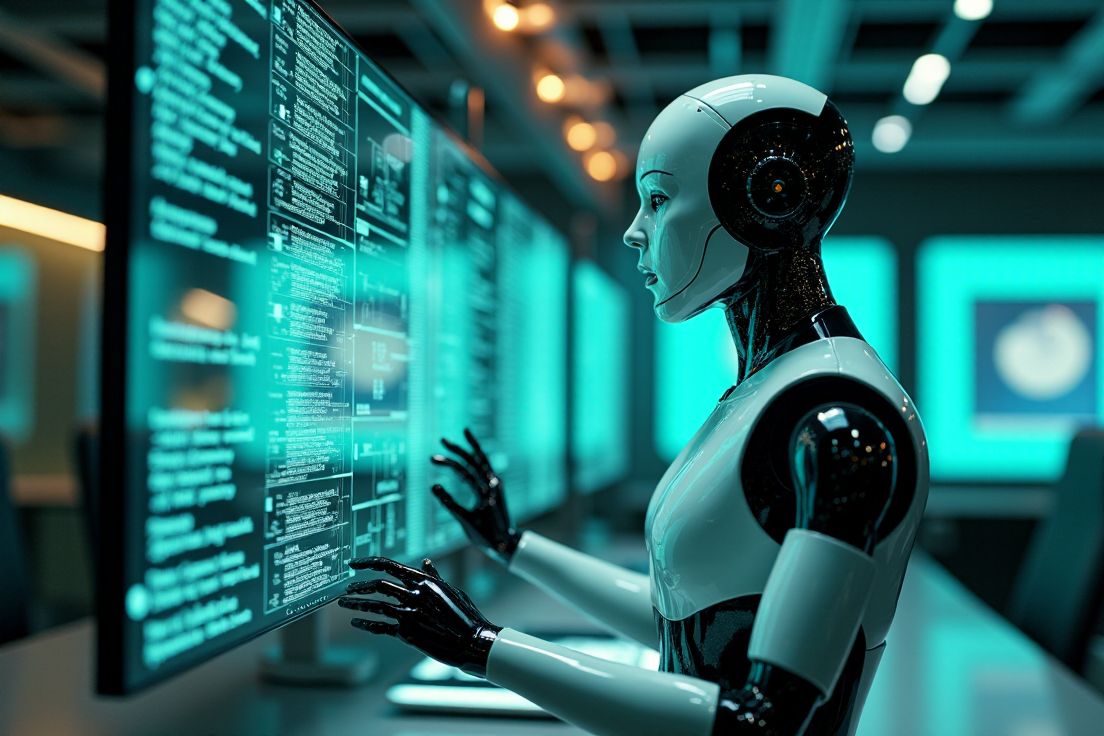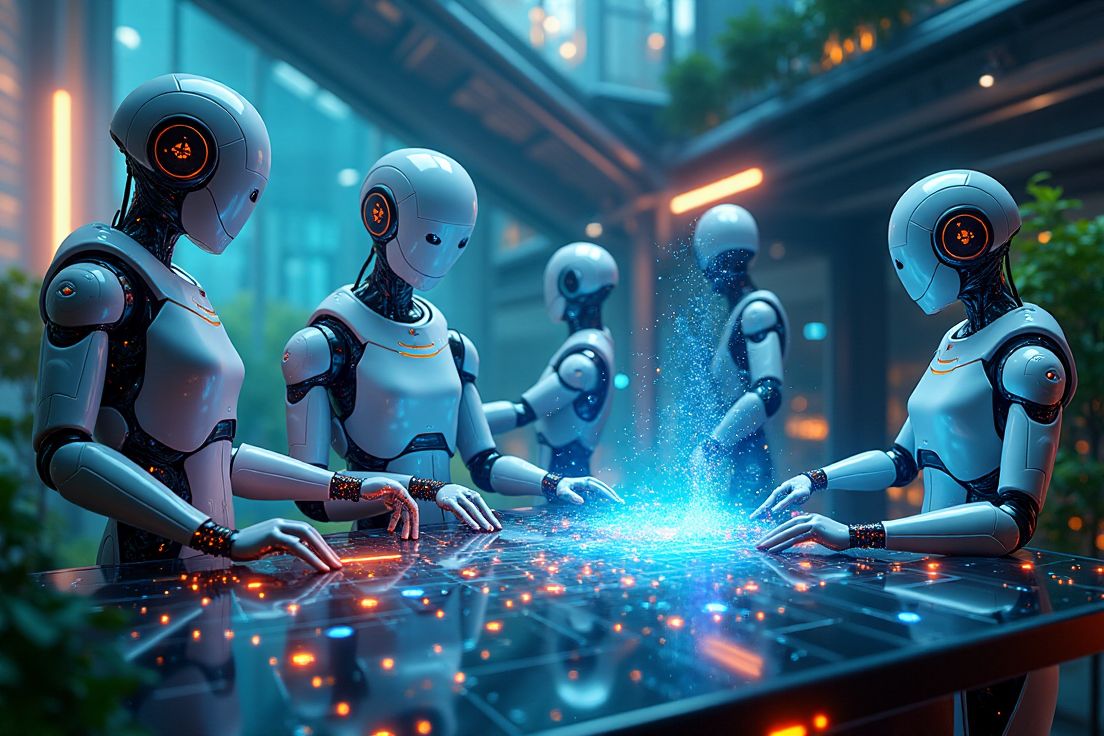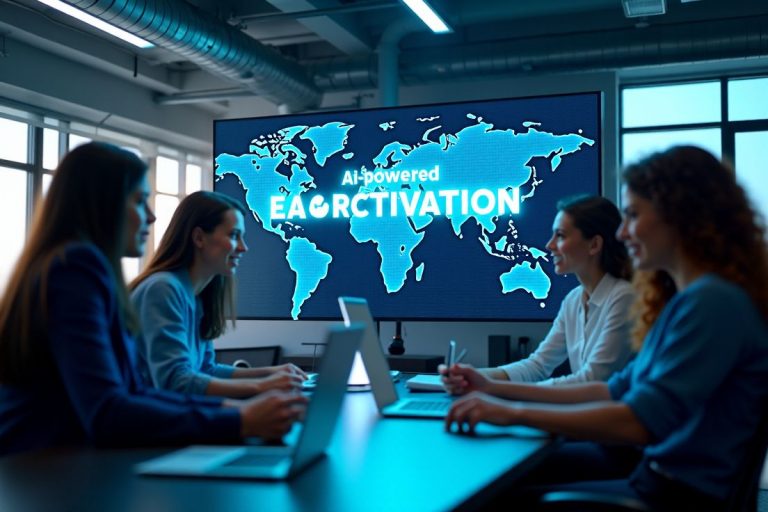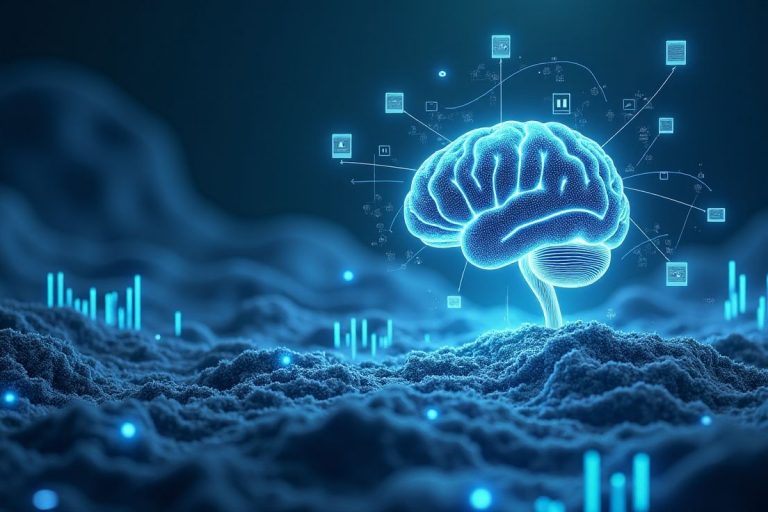The Role of an Agents in Artificial Intelligence
The world of artificial intelligence (AI) is constantly changing, and one of the most exciting areas is the development of AI agents. These intelligent systems have come a long way from their early beginnings, transforming the way we interact with technology.
In the past, AI agents were simple and rule-based, designed to follow specific instructions. However, with advancements in machine learning and natural language processing, these agents have gained remarkable abilities. Today, they can learn from experience, understand human language, and even adapt to user preferences.
As we explore the advancements in AI agent development, we will uncover how these systems are becoming more sophisticated and integrated into our daily lives. From virtual assistants that help with tasks to multi-agent systems that collaborate in complex environments, the evolution of AI agents is reshaping the future of technology.
Advancements in Artificial Intelligence Agent Development

The journey of agents in artificial intelligence showcases remarkable progress over the years. Initially, early AI systems were rule-based, relying heavily on predefined logic. These systems could perform specific tasks but lacked the ability to learn and adapt to new situations. The introduction of machine learning transformed this landscape, enabling agents to improve their performance over time by analyzing data and drawing insights from it.
As technology advanced, the development of neural networks brought a new era for agents. These complex architectures mimicked the human brain, allowing for deeper learning and better handling of vast amounts of information. Consequently, agents became more capable of understanding natural language, recognizing images, and even making predictions.
The rise of reinforcement learning further enhanced agent capabilities.
This approach involves training agents through rewards and penalties based on their actions in various environments. Agents learned to make decisions that maximize their rewards, which paved the way for applications in robotics, gaming, and complex simulations.
Moreover, the integration of agents into real-world applications led to the emergence of intelligent personal assistants. These agents now assist users with daily tasks like scheduling, information retrieval, and even smart home management.
As user interactions become more seamless, agents are evolving to provide personalized experiences, adapting to individual preferences and behaviors.
In recent years, there has been a push towards developing explainable agents, addressing the need for transparency in AI decision-making. These agents strive to not only make decisions but also be able to explain their reasoning in a way that users can understand. This advancement is paramount for trust and efficacy in various sectors, including healthcare and finance.
As the landscape of user-agent interactions shifts, the focus on personalized and transparent experiences is growing. Below are key points highlighting this evolution:
- Increasing emphasis on user-centric design in AI, allowing for tailored interactions that reflect the needs and desires of individual users.
- Development of advanced algorithms that analyze user behavior, enabling agents to predict and adapt to preferences in real time.
- Importance of building trust through transparency, where users can understand the logic behind AI-generated decisions.
- Applications in critical fields such as healthcare and finance, where explainability is crucial for user confidence and safety.
- Continuous improvement through user feedback, allowing agents to refine their approaches and enhance overall user experience.
The Historical Context of Intelligent Agents
The concept of intelligent agents dates back several decades. In the 1950s and 1960s, pioneers like John McCarthy and Marvin Minsky began exploring the idea of machines that could simulate intelligent behaviors. Early experiments in this field involved simple problem-solving programs that utilized basic algorithms to perform tasks such as playing chess or proving mathematical theorems.
As computers became more powerful, the 1970s and 1980s saw the emergence of expert systems.
These systems were designed to mimic the decision-making abilities of human experts in specific domains, relying on a vast database of knowledge and a reasoning mechanism to arrive at conclusions. Although they were limited in scope, expert systems demonstrated the potential for software to act intelligently within confined areas.
With the advent of the internet in the 1990s, intelligent agents began to evolve further. The rise of web-based applications allowed for more complex interactions, leading to the development of agents that could surf the web, gather information, and present it to users.
This table provides an overview of the evolution of intelligent systems from expert systems to intelligent agents in the web era.
| Type of System | Characteristics | Technological Era |
|---|---|---|
| Expert Systems | Mimics human decision-making with a knowledge database | Pre-1990s |
| Narrow Scope | Limited to specific domains and tasks | Pre-1990s |
| Intelligent Agents | Evolved to interact with web applications | 1990s |
| Information Gathering | Ability to surf the web and collect data | 1990s |
| User Interaction | Presenting information to users | 1990s |
This period marked a shift toward collaborative filtering techniques, which enabled agents to recommend products or content based on users’ past behaviors.
Fast forward to the 2000s and beyond, where advancements in machine learning and natural language processing significantly changed the capabilities of intelligent agents. This era introduced virtual assistants that could understand spoken language, respond to queries, and perform tasks like setting reminders or sending messages. The combination of large datasets and improved algorithms contributed to a rapid evolution in how agents functioned, making them more reactive and interactive.
Key Characteristics of AI Agents
AI agents possess several defining traits that contribute to their effectiveness. One important characteristic is autonomy. These agents can operate independently, making decisions based on the data they process without constant human intervention. This allows them to respond quickly to changes in their environment or user requests.
Another key feature is adaptability. AI agents learn from experience over time. They analyze the outcomes of their actions and adjust their strategies to improve future performance. This ability to evolve makes them suitable for various applications, enabling them to handle different tasks effectively.
AI agents also exhibit intelligence, meaning they can solve problems, analyze complex data, and make informed predictions. They utilize sophisticated algorithms and vast amounts of information to derive insights that can drive decision-making.
Interaction is a significant aspect as well. These agents can communicate with users in user-friendly ways, whether through text, voice, or visual interfaces.
This capability helps establish a better connection between technology and its users, making the interaction seamless and efficient.
Moreover, scalability is crucial for AI agents. They are designed to handle increasing volumes of data and user requests without sacrificing performance. This makes them valuable in environments where demand fluctuates
Lastly, many AI agents are designed with some level of explainability.
Types of Agents in Artificial Intelligence
Agents in artificial intelligence can be classified into several types based on their functions and the environments in which they operate. One common type is the reactive agent. These agents respond directly to their surroundings without maintaining a history of past interactions. They are designed to provide immediate responses to specific inputs, making them effective for straightforward tasks.
Another category is the deliberative agent. These agents are more complex, as they can plan ahead based on their goals and the current state of the environment. They actively think about different scenarios and make decisions that best align with their objectives, providing a more sophisticated approach compared to reactive agents.
Hybrid agents combine the strengths of both reactive and deliberative agents.
This allows them to quickly respond to immediate changes while also considering longer-term goals. They utilize various techniques to respond effectively to dynamic environments while planning for the future.
Learning agents represent another important type. These agents have the ability to improve their performance over time through experience.
By collecting data about their actions and outcomes, they can adjust their strategies and enhance their effectiveness, making them suitable for tasks that require adaptability.
Lastly, multi-agent systems consist of multiple agents that work together or compete within an environment. These agents can communicate and coordinate with each other to achieve shared goals or operate independently. This is useful in complex situations where collaboration is necessary to solve intricate problems.
Multi-agent systems are increasingly recognized for their potential to adapt and collaborate in complex environments. Here are some key points highlighting their significance:
- Enhanced adaptability: Agents can modify their behaviors based on real-time data and outcomes.
- Collaborative problem-solving: Agents can pool their resources and knowledge to tackle complicated challenges more effectively.
- Autonomous operation: Some agents can work independently, allowing for flexible approaches to task completion.
- Improved communication: Agents in a multi-agent system can share information seamlessly, fostering better coordination.
- Diverse applications: These systems are suited for various fields, including robotics, logistics, and network management.
The Progression of Intelligent Agents in AI

The evolution of agents in artificial intelligence has taken us through various innovative stages. Over time, the approaches to developing these agents have changed significantly, reflecting growing technological capabilities and user expectations.
As researchers explored different learning methods, the focus shifted toward developing more sophisticated algorithms that could handle complex tasks. This shift allowed agents to not only react to commands but also anticipate user needs based on past interactions.
As a result, the interaction became more fluid and intuitive.
The integration of advanced computational power has also played a pivotal role in the development of agents. With the rise of cloud computing and increased data storage capacities, agents can now process vast amounts of information in real time. This capability means that they are better equipped to manage tasks and offer responses that are not only accurate but also timely.
Another important element in agent evolution is the incorporation of ethical considerations. As AI becomes more prevalent, it’s essential to ensure that agents act responsibly and promote positive outcomes. This focus on ethics will shape future development, as designers work to create systems that respect user privacy and encourage responsible decision-making.
In recent advancements, the concept of multi-modal agents has emerged.
These highly versatile agents can interact through various channels, including text, voice, and visual interfaces. This development supports richer user experiences, catering to different preferences and contexts.
As AI continues to develop, agents are expected to become even more integrated into our daily lives. From personal assistants to specialized industry applications, the potential for growth is immense.
This ongoing journey reflects not just technological enhancements but also a deeper understanding of how agents can effectively serve human needs.
The Evolutionary Journey of Intelligent Agents in AI History
The evolution of intelligent agents reflects a rich history rooted in computer science and cognitive research. In the early stages, researchers were focused on developing systems that could perform specific tasks. These foundational efforts laid the groundwork for what would become the field of AI, where the aspiration to create machines that could simulate intelligent behavior first took shape.
During the 1950s, attention turned towards symbolic reasoning.
Researchers envisioned machines that could manipulate symbols to represent knowledge, allowing for logical reasoning similar to human intelligence. Programs developed during this time could solve problems and engage in limited conversations, albeit within narrow contexts.
The surge of expert systems in the 1980s marked another significant milestone. These systems represented a shift towards knowledge-based AI.
The evolution of artificial intelligence has seen pivotal developments, particularly in the realms of symbol manipulation and expert systems, which have significantly shaped the capabilities of AI technologies.
- Early AI research focused on logical reasoning through symbolic representation, mirroring human cognitive processes.
- Initial AI programs laid the groundwork for problem-solving abilities and limited conversational interactions.
- The 1980s experienced an explosion of expert systems, designed to utilize structured knowledge for decision-making.
- Expert systems began to incorporate domain-specific knowledge, allowing them to excel in specialized tasks.
- This period marked a transition to knowledge-based AI, enhancing the potential applications across various industries.
By incorporating vast amounts of information and decision-making rules, they aimed to replicate the expertise of human specialists in various fields. Although their effectiveness was constrained to specific domains, they showcased the potential for machines to operate intelligently in defined areas.
By the 1990s, the rise of the internet propelled intelligent agents into a new realm. The ability to access and gather information from a global network allowed these agents to enhance their functionality and serve more dynamic user needs.
They evolved from systems that merely processed predefined rules to those capable of exploring online resources, making real-time data retrieval a common feature.
Continuing into the 21st century, rapid advancements in machine learning revolutionized how agents learned and adapted. Algorithms became more sophisticated, enabling agents to analyze data patterns and improve their performance without human intervention. This era saw the emergence of conversational agents capable of understanding natural language and responding contextually, making them invaluable tools in various applications.
The journey of intelligent agents reflects a combination of ambition, technological progress, and creativity, indicating the importance of historical developments in shaping the AI landscape today.
Types of Intelligent Agents in Artificial Intelligence
Intelligent agents in artificial intelligence can be categorized in various ways, depending on their capabilities and how they operate. One prevalent type is reactive agents. These agents react to stimuli in their environment without any memory of past actions. They are designed for immediate responses, making them suitable for straightforward tasks that require quick actions.
Another significant type is the deliberative agent. Unlike reactive agents, these agents can plan their actions based on current conditions and their goals. They think ahead and decide on the best course of action, making them more advanced in dealing with complex situations.
Hybrid agents combine features from both reactive and deliberative agents.
They are quick to respond to immediate changes while also taking into account long-term objectives. This flexibility enables them to perform well in dynamic environments where conditions frequently shift.
Learning agents represent another key type. These agents can improve their performance by learning from their experiences.
In dynamic environments, agents that exhibit adaptability and learning capabilities are crucial for success. Here are some key attributes that enhance their effectiveness:
- Ability to adapt strategies quickly in response to evolving circumstances.
- Focus on continuous improvement through ongoing learning and experience assessment.
- Integration of new information to refine decision-making processes.
- Coordination with other agents to enhance collective performance in changing scenarios.
- Utilization of past experiences to forecast future outcomes and improve responsiveness.
They adapt their strategies based on the outcomes of their previous actions, allowing them to be effective in environments that require continual adjustment.
Finally, there are multi-agent systems, composed of multiple agents that interact and collaborate within the same environment. These systems can function together towards common goals or work independently while sharing information. This aspect is particularly useful in complex scenarios that demand coordinated efforts among various agents.
Key Milestones in the Evolution of AI Agents
Several key moments have marked the growth of AI agents. One of the most significant milestones occurred in the 1950s when pioneers like John McCarthy and Marvin Minsky laid the groundwork for artificial intelligence. They began experimenting with early programs that could simulate intelligent behavior, leading to the birth of AI as a field of study.
Then, in the 1980s, the rise of expert systems showcased a shift towards knowledge-based AI.
These systems used large databases and rules to make decisions, aiming to mimic human experts in specific fields. Their introduction marked a crucial point in demonstrating how computers could perform complex tasks within limited domains.
With the internet’s growth in the 1990s, intelligent agents evolved again. They gained the ability to navigate the web, gather information, and present it to users in a more interactive manner.
In the evolution of intelligent systems, several advancements have significantly changed how computers interact with data and users. Below are key points reflecting the development of these systems:
- Initial systems focused on replicating expert decision-making within restricted domains.
- Large databases were essential for processing information and applying established rules effectively.
- The expansion of the internet in the 1990s transitioned intelligent agents to more dynamic roles.
- These advanced agents became capable of gathering relevant information from diverse online sources.
- User interaction improved, as systems presented data in more engaging and accessible formats.
This period also saw the emergence of recommendation algorithms that shaped user experiences online.
The arrival of machine learning in the early 2000s transformed AI agents once more. They could now learn from data, improving their performance over time without constant human input. This led to the development of systems capable of understanding natural language, allowing for a more intuitive interaction between humans and machines.
Recent years have introduced advancements in explainability. This focuses on making AI decisions transparent, helping users understand how agents arrive at their conclusions. Such progress is vital for building trust in AI technologies, especially in critical areas such as healthcare and finance.
Overall, these milestones have drastically changed how AI agents operate, making them more effective and essential in our daily lives.
From basic rule-based systems to sophisticated learning agents, the evolution of AI agents reflects significant technological innovation and increased capabilities that continue to shape the future of artificial intelligence.
The Progression of Intelligent Agents in AI

The journey of agents in artificial intelligence has been marked by continual innovation and growth in capabilities. As the understanding of AI deepened, researchers developed more advanced algorithms that allowed agents to not just follow commands but also predict user needs based on prior interactions. This shift resulted in smoother and more intuitive user experiences.
The surge in computational power was also a critical factor in this evolution.
With cloud computing becoming more accessible, agents can now process large volumes of data in real time. This leads to more precise and timely responses to user requests, enhancing the practicality of these systems.
Another crucial aspect in the evolution of AI agents is the emphasis on ethics. As these technologies become integrated into everyday life, creating agents that are responsible and promote beneficial outcomes is increasingly important.
Designers strive to build systems that prioritize user privacy while encouraging ethical decision-making.
In recent developments, the emergence of multi-modal agents has added another layer of sophistication. These agents can communicate through various methods, such as text, voice, and visual inputs, enriching the interaction between users and technology.
As AI continues to progress, we can expect agents to become more ingrained in our daily tasks.
From virtual assistants to specialized industry tools, the opportunities for improvement and adaptation are vast, reflecting a deeper comprehension of how agents can efficiently meet human needs.
The Evolution of Smart Agents Through History
The historical development of intelligent agents spans several pivotal eras, each characterized by significant advancements. The early journey began in the 1950s when researchers like John McCarthy and Marvin Minsky explored the idea of machines that could simulate intelligent behavior. This led to the creation of early AI programs, which could solve problems or play games like chess, marking the emergence of artificial intelligence as a field.
In the 1980s, expert systems emerged and represented a major leap forward.
These systems were designed to utilize extensive databases of knowledge, mimicking the decision-making abilities of human specialists in specific domains. Although limited in general application, they showcased the potential for AI to operate intelligently within structured frameworks.
The 1990s brought about the rise of the internet, which transformed intelligent agents yet again. Now capable of accessing vast amounts of information online, these agents evolved from basic rule-followers to more dynamic entities that could explore, learn, and present gathered data to users in real-time.
The ability to surf the web and retrieve information became a groundbreaking feature of intelligent agents during this era.
As we moved into the 2000s, rapid advancements in machine learning and natural language processing further reshaped the landscape. Agents became more adept at understanding and interacting in natural language, making them approachable and efficient. This period also introduced virtual assistants that could perform tasks like setting reminders, responding to questions, and managing schedules.
Pivotal Moments in Agent-Based System Development
Throughout the development of agent-based systems, several significant milestones have marked their progress. In the early 1950s, pioneers like John McCarthy and Marvin Minsky were instrumental in laying the foundation for artificial intelligence. They created some of the first programs that could imitate intelligent behavior, such as problem-solving tasks, which spurred interest in creating smarter machines.
Moving into the 1980s, the rise of expert systems was a game changer.
These systems could use extensive databases to make decisions and mimic human experts in specific fields. They showed just how powerful AI could be in performing complex tasks, highlighting the ability of computers to process information intelligently within narrow domains.
The expansion of the internet in the 1990s pushed intelligent agents into a new era. Now, agents could gather information from the web, making them more interactive and capable of meeting user needs dynamically.
AI systems have evolved significantly due to their ability to process large amounts of data and simulate human expertise. The advent of the internet has further enhanced their interactivity and responsiveness, leading to remarkable advancements in various fields. Below are key points that highlight these developments:
- Utilization of vast databases enables AI to replicate expert decision-making in specialized areas.
- AI demonstrates proficiency in executing intricate tasks by processing information within defined domains efficiently.
- The growth of the internet has facilitated the evolution of intelligent agents, enhancing their functionality.
- Access to web information allows AI systems to create dynamic responses tailored to user requirements.
- Interactivity with users has become a hallmark feature of modern AI systems, improving user experience and satisfaction.
This development marked the shift from static systems to ones that could explore and learn from the vast resources available online.
Another significant milestone came in the early 2000s with the advent of machine learning. This technology allowed AI agents to learn from data and improve their performance over time. They could understand natural language, making conversations with users more effective.
As a result, virtual assistants emerged, capable of responding to queries and performing tasks in more intuitive ways.
In recent years, advancements in explainability have gained attention. As agents are increasingly used in sensitive areas like healthcare, it is vital for them to be able to explain their decisions and actions. This trend towards transparency helps build user trust, ensuring that AI technologies serve their purpose responsibly.
Types of Agents in Artificial Intelligence
Agents in artificial intelligence come in different types based on how they operate and respond to their environment. One type is called a reactive agent. These agents only respond to what is happening around them right now. They do not remember past actions, which makes them great for tasks that need quick responses, like sorting emails or controlling a simple robot.
Next, we have deliberative agents. Unlike reactive agents, these agents think ahead. They can make plans based on their goals and understand the current situation. This ability to think through choices makes them helpful in complex tasks, like playing strategy games where careful planning is necessary.
Hybrid agents mix the best parts of reactive and deliberative agents. They can respond quickly to immediate changes while also considering their long-term goals. For example, a hybrid agent may respond to a customers query immediately while planning further interactions to enhance the user experience.
Learning agents improve over time by learning from their experiences.
They collect data about what works and what doesnt, allowing them to adapt their strategies. These agents are often used in gaming or customer service, as they learn from user interactions to become more effective.
Lastly, multi-agent systems feature groups of agents that either work together or compete with each other. These agents can share information among themselves, which helps them tackle complicated problems.
For instance, in a delivery service, multiple agents can collaborate to optimize delivery routes.
Frequently Asked Questions
This FAQ provides answers to common questions about the advancements and evolution of artificial intelligence agents as discussed in our blog post. Learn about the key developments and characteristics that define modern AI agents.
What are artificial intelligence agents?
Artificial intelligence agents are software systems designed to perform tasks autonomously by interpreting data, making decisions, and learning from interactions with their environment.
How have AI agents evolved over time?
AI agents have evolved from simple rule-based systems to complex algorithms that utilize machine learning, natural language processing, and neural networks, allowing them to learn, adapt, and perform more sophisticated tasks.
What types of agents exist in artificial intelligence?
There are several types of agents, including reactive agents, deliberative agents, hybrid agents, learning agents, and multi-agent systems, each with different functionalities and methods of operation.
What is the significance of explainable AI agents?
Explainable AI agents are significant because they provide transparency in decision-making, allowing users to understand the reasoning behind the agents’ actions, which is crucial for building trust in sectors like healthcare and finance.
What are multi-agent systems?
Multi-agent systems consist of multiple agents that work together or compete within an environment, allowing for collaborative problem-solving and improved adaptability in complex situations.
What role do ethical considerations play in AI agent development?
Ethical considerations are becoming increasingly important in AI agent development, ensuring that these systems act responsibly, protect user privacy, and promote positive social outcomes.
How do AI agents improve user experience?
AI agents enhance user experience by providing personalized interactions, anticipating user needs, and continuously refining their approaches based on feedback and behavior analysis.
Conclusion
The evolution of artificial intelligence agents has truly changed how we interact with technology. From their beginnings as simple rule-based systems to todays advanced agents capable of learning and adapting, we have made remarkable strides.
These agents are not only becoming more intelligent but also more user-friendly. With the focus on personalized experiences and clear communication, users can now enjoy technology that understands their needs better than ever.





